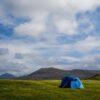캠핑용품을 선택할 때에는 자신이 원하는 캠핑 스타일과 활동에 맞는 제품을 고르는 것이 가장 중요합니다. 텐트, 천막, 취사도구, 등산화, 등산가방 등 다양한 용품들이 있지만, 각각의 제품은 자신의 용도에 맞게 신중하게 선택해야 합니다. 또한 가격, 브랜드, 품질, 가벼움과 휴대성 등 다양한 요소들을 고려하여 선택하는 것이 좋습니다. 캠핑용품을 잘 선택하면 더욱 편안하고 안전한 캠핑을 즐길 수 있을 것입니다. 아래 글에서 자세하게 알아봅시다.
캠핑용품 선택의 요령을 알아보자 – The Ultimate Guide to Choosing Camping Gear
1. Choosing the Right Tent
When it comes to choosing the right tent, there are several factors to consider. First, determine the size and type of tent you need based on the number of people and the camping conditions. Look for durable materials, such as nylon or polyester, that are waterproof and resistant to tears. Consider the tent’s weight and packability if you plan on backpacking or hiking to your camping destination. Additionally, check for features like ventilation, easy setup, and extra storage space. Don’t forget to compare brands and read reviews to ensure you’re getting a high-quality tent that suits your needs.
1.1 Size and Type
Consider how many people will be sleeping in the tent and whether you need additional space for gear. Choose a tent size that allows for some extra room to move around comfortably. The type of tent will depend on the camping conditions and your preferences. Some common types include dome tents, cabin tents, backpacking tents, and family tents. Dome tents are a great option for most camping trips, as they are easy to set up, lightweight, and offer good weather protection. Cabin tents provide more vertical space and are suitable for car camping. Backpacking tents are designed for lightweight and compact packing, making them ideal for hiking trips. Family tents are larger and provide ample space for multiple people and gear.
1.2 Durability and Weather Resistance
A durable tent is essential for withstanding the rigors of camping. Look for tents made from strong materials like nylon or polyester. Check for reinforced seams and sturdy zippers that can withstand frequent use. The tent should also be waterproof to keep you dry during rainy weather. Look for tents with a waterproof rating of at least 1500 mm or higher. Additionally, consider a tent with a rainfly or vestibule for added protection against the elements.
1.3 Weight and Packability
If you plan on backpacking or hiking to your camping destination, consider the weight and packability of the tent. Look for lightweight materials and compact designs that won’t weigh you down or take up too much space in your backpack. Freestanding tents are a great option as they are easy to set up and take down. If weight is not a concern, larger tents with more features and space may be suitable for car camping or longer stays.

송민호 캠핑 용품
2. Essential Cooking Gear
Having the right cooking gear is crucial for preparing meals while camping. Consider your cooking style and the type of meals you plan to prepare. Look for lightweight and durable cookware that is easy to clean and heat-resistant. Choose a stove that suits your needs, whether it’s a portable gas stove, a compact backpacking stove, or a traditional campfire cooking setup. Don’t forget to pack utensils, plates, cups, and other essentials for a complete camping kitchen.
2.1 Cookware and Utensils
Invest in high-quality cookware that is lightweight, durable, and easy to clean. Look for non-stick pans and pots that are suitable for outdoor cooking. Stainless steel, titanium, and aluminum are popular materials for camping cookware due to their lightweight and heat distribution properties. Consider the size of the cookware based on the number of people you’ll be cooking for. Don’t forget to pack utensils like spatulas, tongs, knives, and cutting boards for food preparation.
2.2 Stoves and Fuel
Choose a stove that fits your cooking style and camping needs. Portable gas stoves are convenient and easy to use, providing a reliable heat source for cooking. Backpacking stoves are lightweight and compact, perfect for treks where weight is a concern. Traditional campfire cooking setups allow you to cook over an open fire, but require more time and effort. Consider the type of fuel compatible with your stove, such as propane, butane, or white gas, and make sure to pack enough fuel for the duration of your trip.
2.3 Tableware and Cleanup
Don’t forget to pack plates, bowls, cups, and utensils for your meals. Look for lightweight options made from plastic or stainless steel. Consider reusable options to minimize waste and be environmentally friendly. Don’t forget dish soap, a scrub brush or sponge, and a collapsible basin for washing dishes. Pack a trash bag or two to dispose of any waste responsibly.
3. Selecting the Right Footwear
Choosing the right footwear is essential for a comfortable and safe camping experience. Consider the terrain, weather conditions, and activities you’ll be participating in. Look for shoes that provide good traction, ankle support, and waterproofing if needed. Fit is crucial, so try on shoes with the socks you’ll be wearing while camping to ensure a proper fit. Remember to break in new shoes before your camping trip to avoid discomfort or blisters.
3.1 Hiking Boots or Shoes
Hiking boots or shoes are essential for outdoor activities, especially on uneven terrain. Look for boots or shoes with a sturdy sole and good traction to prevent slips and falls. Ankle support is important, especially if you’ll be carrying a heavy backpack or hiking on rugged trails. Opt for waterproof or water-resistant footwear if there’s a chance of encountering wet conditions.
3.2 Sandals or Water Shoes
Pack a pair of sandals or water shoes for activities like swimming, water sports, or crossing rivers. Look for shoes with good drainage and grip to prevent slipping on wet surfaces. Sandals with adjustable straps are versatile and can be worn for casual walks or more strenuous activities.
3.3 Camp Shoes or Slippers
Having a pair of camp shoes or slippers to change into at the end of the day can provide much-needed relief and comfort. Look for lightweight and breathable options that are easy to slip on and off. Camp shoes should be sturdy enough for light walking around the campsite.
4. Backpacks and Daypacks
Choosing the right backpack or daypack is crucial for comfortably carrying your gear while camping or hiking. Consider the duration of your trip and the amount of gear you’ll need to pack. Look for backpacks with adjustable straps, a padded hip belt, and a supportive frame. Don’t forget to check for pockets and compartments for easy organization and accessibility.
4.1 Backpacking Backpacks
If you’re planning on multi-day backpacking trips, invest in a backpack specifically designed for backpacking. Look for backpacks with a capacity suitable for your trip duration and the volume of gear you’ll be carrying. Adjustable straps and a supportive frame will help distribute weight evenly and reduce strain on your back. Consider features like a built-in rain cover, hydration bladder compatibility, and external attachment points for additional gear.
4.2 Daypacks
For shorter hikes or day trips, a daypack is a more compact and lightweight option. Look for a daypack with a capacity of around 20-30 liters, depending on how much gear you’ll be carrying. A padded back panel and shoulder straps will provide comfort and support during your hike. Look for a daypack with a hydration bladder sleeve or external water bottle pockets for easy access to water.
4.3 Camping Backpacks
If you’re car camping or staying at a designated campsite, a larger camping backpack can be useful for carrying gear to and from your campsite. Look for a backpack with a capacity suitable for your needs, as well as features like padded shoulder straps and back panel for comfort. Consider a backpack with multiple compartments and pockets for organized storage.
Remember, the key to choosing camping gear is to consider your camping style, activities, and personal preferences. Research different brands, read reviews, and compare features to ensure you’re getting the best gear for your needs. Happy camping!
추가로 알면 도움되는 정보
1. Consider the climate and weather conditions of your camping destination and choose gear accordingly. For example, if you’re camping in a hot and humid area, look for tents with good ventilation or invest in a portable fan. If you’re camping in cold weather, make sure to pack appropriate clothing, sleeping bags, and insulation.
2. Don’t forget about lighting. Having a reliable light source is essential for activities after dark and for navigating around the campsite. Consider options like headlamps, lanterns, or portable LED lights.
3. Invest in a good quality sleeping bag and sleeping pad for a comfortable night’s sleep. Look for insulation that suits the temperature range of your camping destination, and choose a sleeping pad that provides cushioning and insulation from the ground.
4. Pack essential first aid supplies, including bandages, antiseptic ointment, pain relievers, insect repellent, and sunscreen. It’s also a good idea to have a basic knowledge of first aid and emergency protocols.
5. Consider the environmental impact of your camping gear choices. Look for gear made from eco-friendly materials, minimize waste by choosing reusable options, and practice Leave No Trace principles to minimize your impact on the natural environment.
놓칠 수 있는 내용 정리
– Checking the dimensions and capacity of a tent to ensure it can accommodate your height or provide enough space for your gear.
– Packing appropriate clothing and layers for different weather conditions, including rain gear or thermal layers for colder nights.
– Considering the need for additional gear like a camping stove, camp chairs, or a portable grill for a more comfortable camping experience.
– Checking if your chosen campsite has any specific regulations or restrictions on fire use, cooking, or noise.
– Packing a repair kit with essential items like duct tape, extra tent stakes, and a sewing kit for any unexpected gear or equipment issues.
– Bringing entertainment options such as books, games, or musical instruments for downtime at the campsite.












